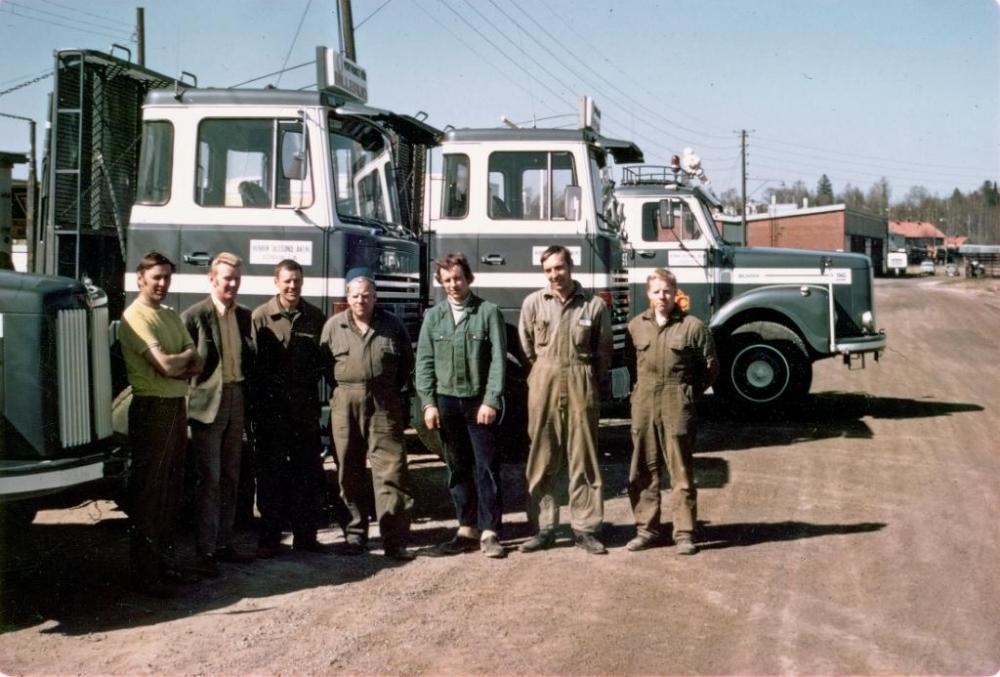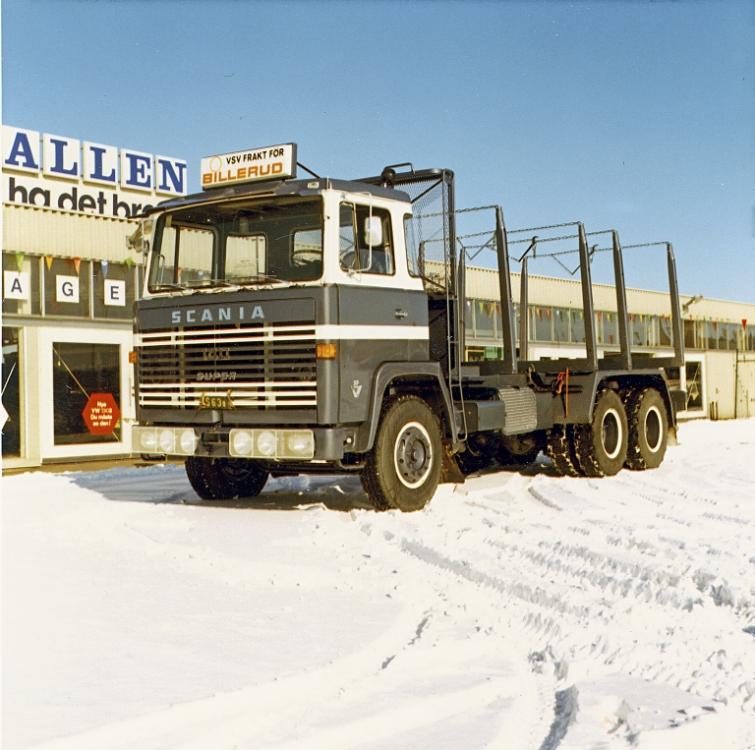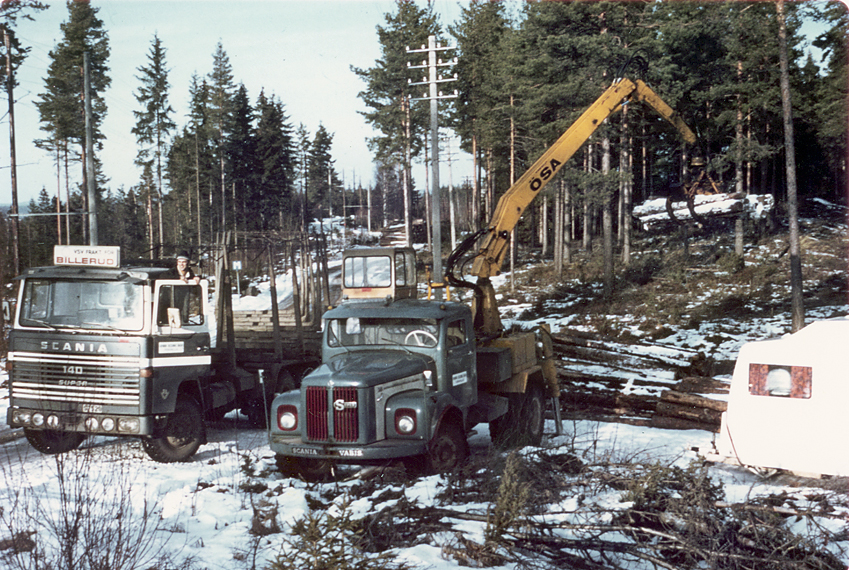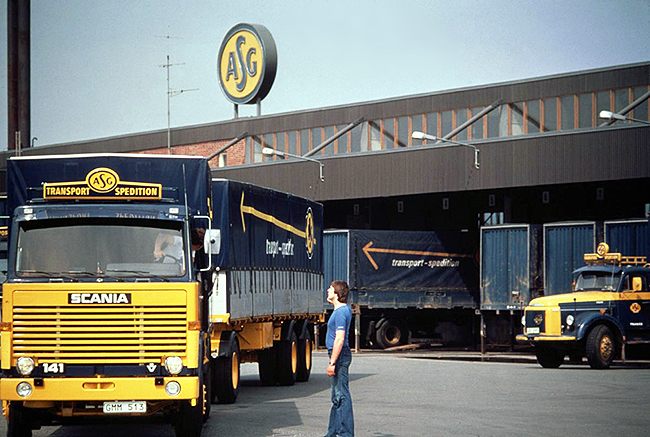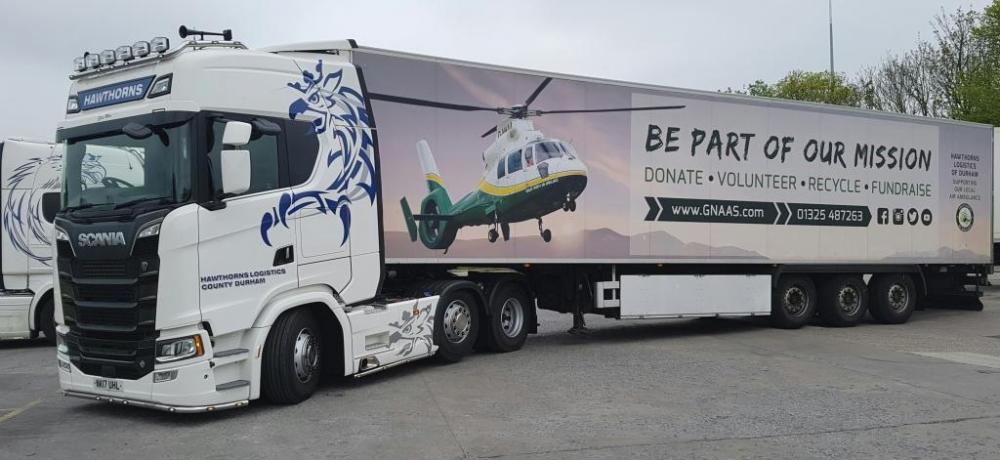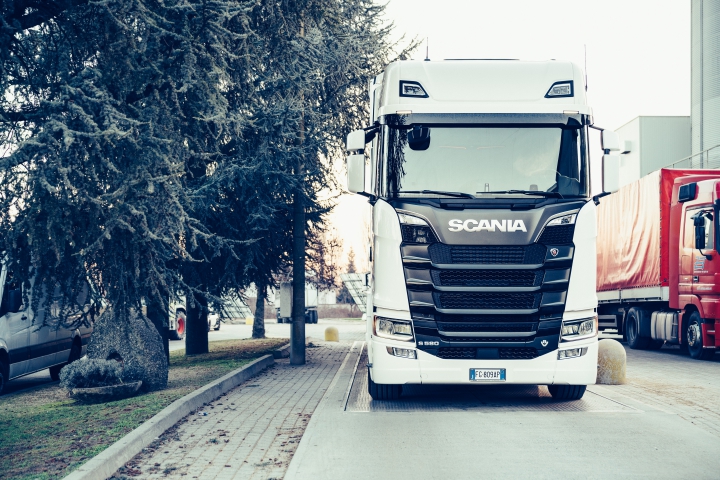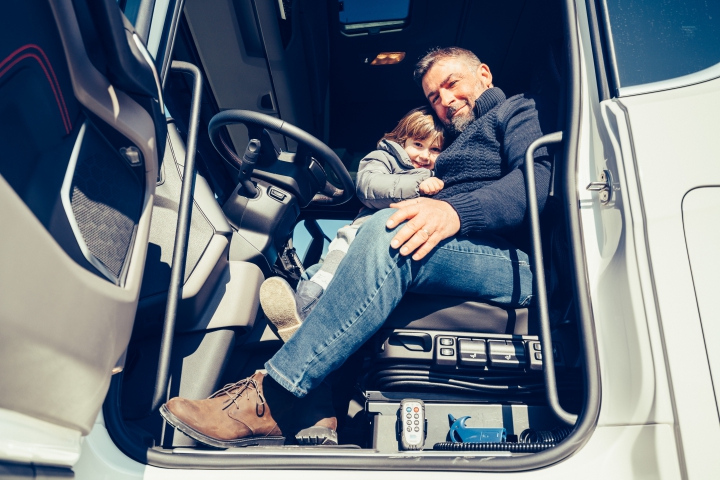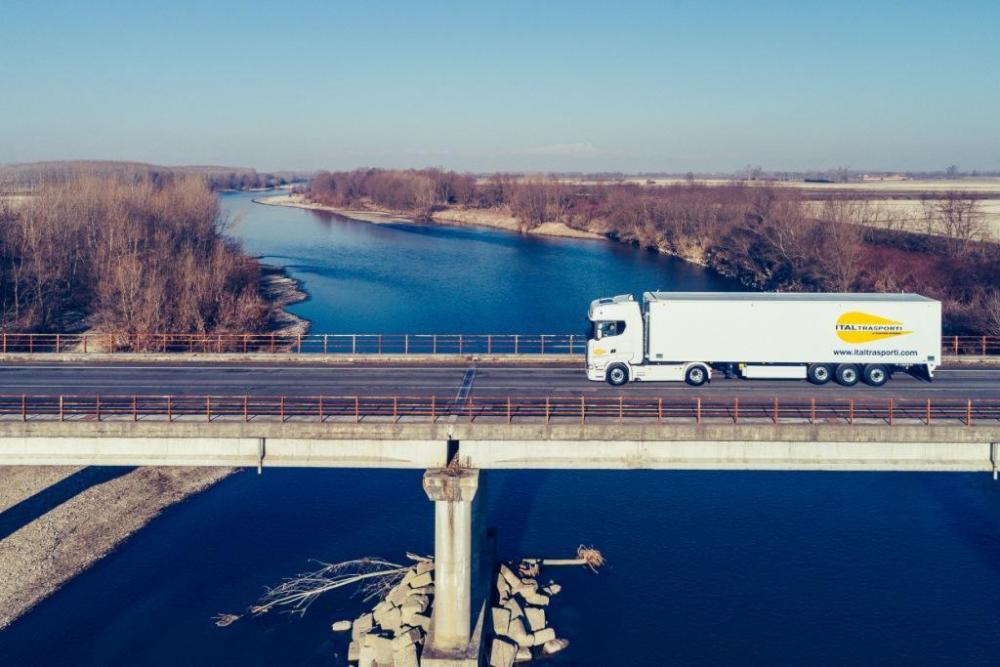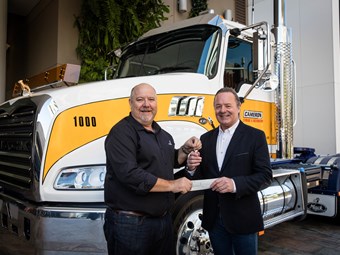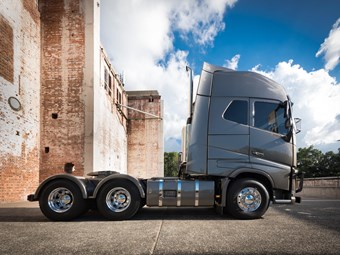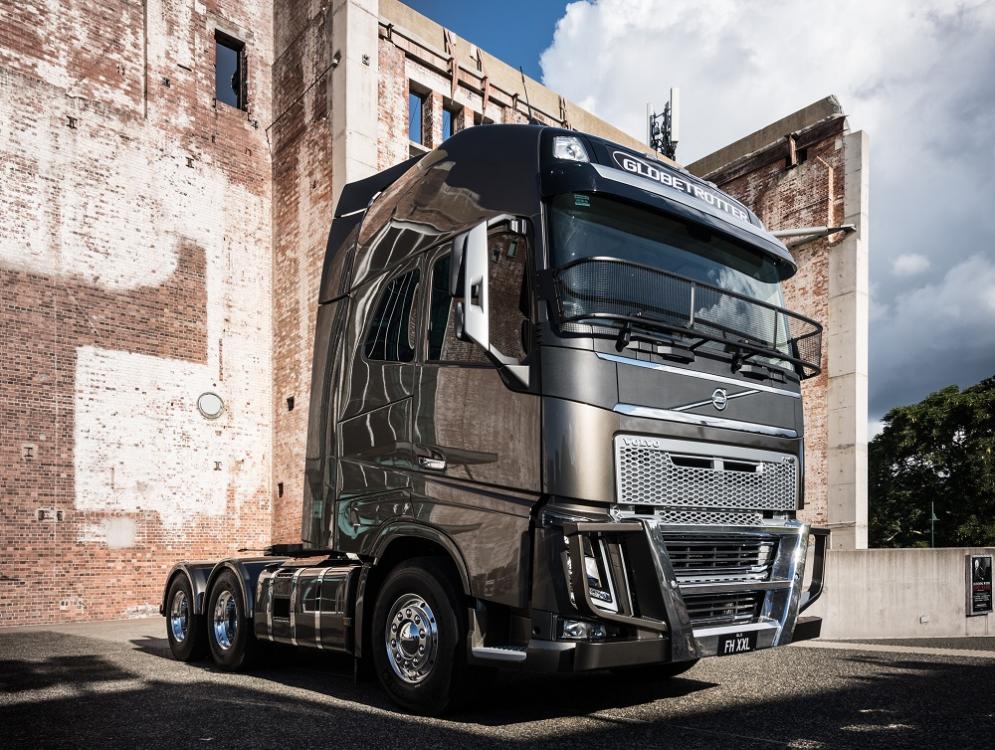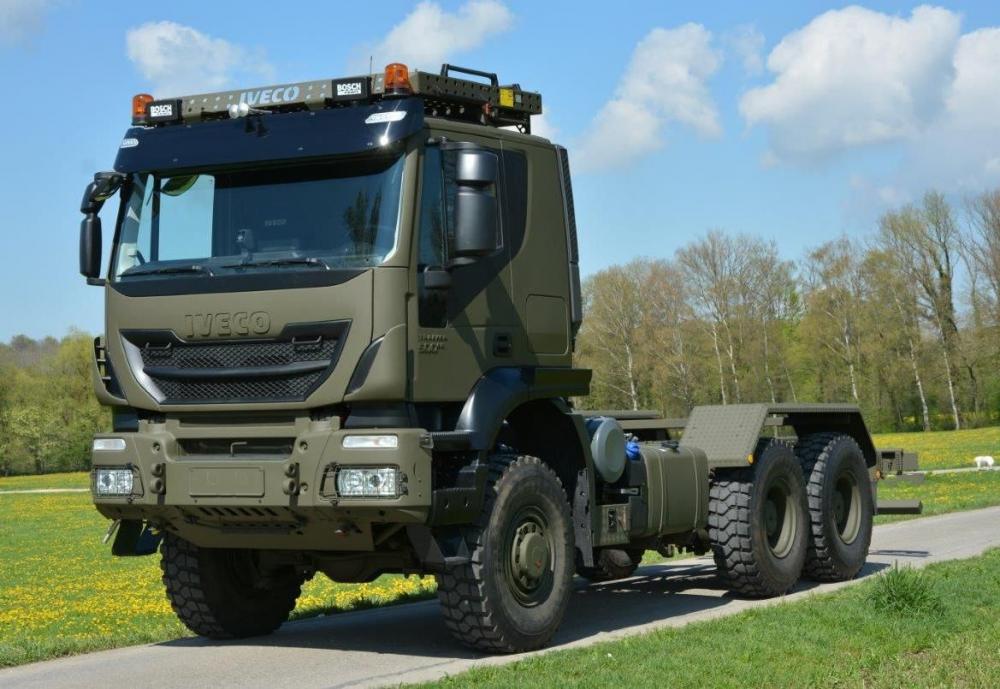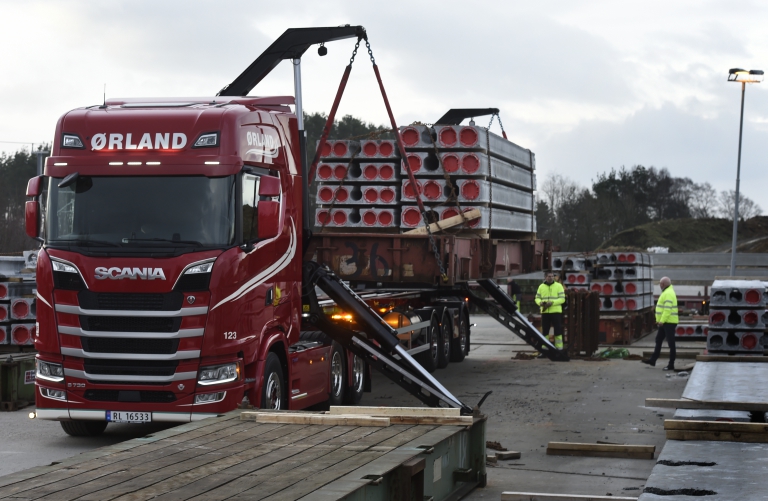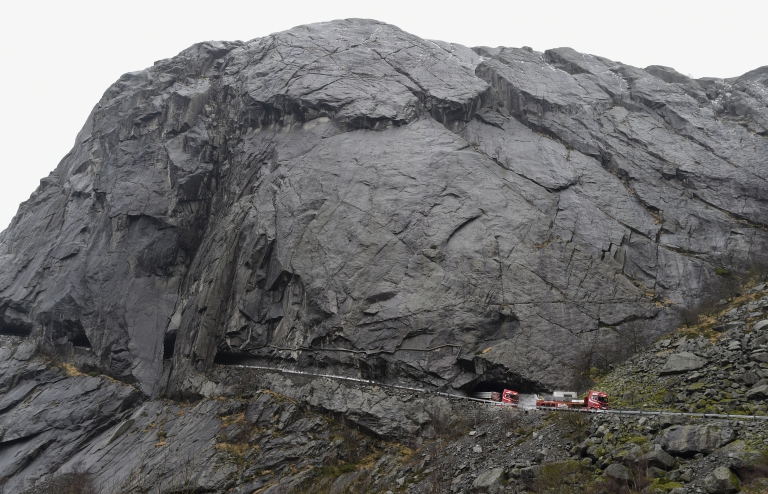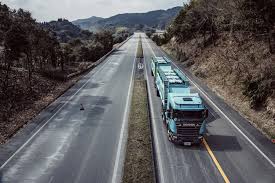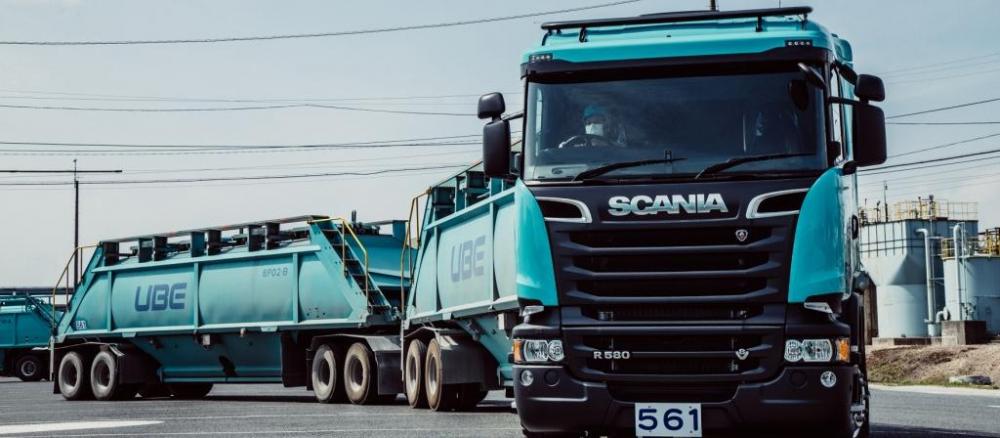
kscarbel2
Moderator-
Posts
17,893 -
Joined
-
Days Won
86
Content Type
Profiles
Forums
Gallery
Events
Blogs
BMT Wiki
Collections
Store
Everything posted by kscarbel2
-
In my opinion, the whole point of the exercise was to ensure SEATO* navies could function well together. The (now defunct) Southeast Asia Treaty organization was created in 1954 for the specific reason of fighting the spread of communism in that region, which translates into fighting communist North Vietnam if and when. Thus my thought is, had there been no Vietnam war, the Evans would never had been in the incident. The exercise was intended to hone the skills of interacting US and Australian forces actively involved in 'Nam. And thus, the names of those sailors should already be on the wall in DC. * https://en.wikipedia.org/wiki/Southeast_Asia_Treaty_Organization
-
Let's be honest, looking back, this was the kind of news that they went out of their way to either cover-up, down-play with the cooperation of the three major US medias (ABC, CBS, NBC) or distort (disinformation). "Nam" is the reason the Evans was in the South China Sea. Why aren't those men's names already on the wall?
-
Finnish Sisu planetary axles.
-
GM Character in Question. As Unprincipled as VW and FCJ?
kscarbel2 replied to grayhair's topic in Other Truck Makes
"Listen, I'm a politician which means I'm a cheat and a liar, and when I'm not kissing babies I'm stealing their lollipops. But it also means I keep my options open" -
Scania Group Press Release / May 31, 2017 The first Scania V8 truck was delivered to Henrik Olssons Åkeri, a haulage firm in Edsvalla, Sweden, for use in forestry work. Henrik Olsson, today 72 years old, remembers very well his introduction to the Scania V8 engine. “When we found out about this new engine, with 90 more horses than anything else we had, I decided on the spot to buy one,” he says. “In our forests there was a great need for extra power. After bodywork, the truck, an LBT140, began operating on two shifts. Soon it was joined by another LBT140.” It was a learning experience. Olsson remembers especially how calmly the clutch needed to be handled. “It grabbed hold immediately, so it wasn’t entirely easy to make a smooth start,” he recalls. “The engine was a bit powerful for the drive shaft, and on a couple of occasions we needed emergency care at the Lecab Scania workshop in Karlstad. One of the reasons why we stuck with Scania was that not only was it a good truck, but the service was also outstanding. We always got help when we needed it.” A total of 12 people worked at the haulage company. In addition to four forestry trucks, its fleet included excavators and crane trucks. Olsson ran the company until 1987. After 20 years in the business, he switched careers and became an official of the Värmland province hauliers’ association. He was quite happy representing hauliers in their dealings with politicians and public authorities. He remained in this position until his retirement. So what happened to the first Scania V8? After four years and 600,000 problem-free kilometres, it was replaced. 1969 Scania V8 took the competition’s breath away Development work had been under way since 1962 [within the Mack Trucks-Scania V8 cooperation]. Three years of tough laboratory and highway testing confirmed that it would be a success. When Scania unveiled its DS 14 V8 engine at the 1969 international motor show in Frankfurt, it gave competitors a knock-out punch. At 350 hp, it was the world’s most powerful diesel engine for trucks, and journalists were interested. It had been many years since a truck-related product triggered so many questions and positive comments. Denmark’s Motor-magasinet wrote: “There is no doubt that the new Scania engine will meet future needs for trucks with substantially higher output than today. In this way, the natural tensions between slower commercial vehicles and faster car traffic can be smoothed, a more uniform traffic rhythm achieved on the heavily used road network, and the traffic capacity of roads can be increased.” Scania’s Swedish customer magazine MIL elaborated on the V8’s expected traffic characteristics: “The new engine gives the 140 series both transport economy and road safety advantages. High tractive power provides more even speed with large loads. When climbing hills with more than a 1 percent incline, you can count on 30 percent higher speed for a fully loaded long-haul rig. Better acceleration enables the truck to adapt smoothly to increasingly dense highway traffic.” After the 1969 launch, Scania’s LB140 models with a V8 engine quickly won acclaim in the transport industry. High output combined with a torque curve emphasising low engine speeds were a pleasant and effective combination in a heavy vehicle. A legend was born. In 1969 the V8 driver… … was listening to Elvis Presley’s comeback album From Elvis in Memphis and maybe also the Beatles’ Yellow Submarine. At the cinema, Midnight Cowboy featured a young Dustin Hoffman. And mankind had just landed on the moon. .
-
Scania Group Press Release / June 2, 2017 English haulier delighted by new S series trucks, uses trailers to promote air ambulance service With a haulage fleet that does around ten million kilometres a year, UK-based Hawthorns Logistics needs trucks that are reliable and can operate non-stop. That’s why it has bought six of the new Scania S series. Delivering as promised Hawthorns, which is based in the town of Washington in the north-east of England, already has two an S 580 with and an S 520, with others on their way. And the company’s Director Chris Kilsby is delighted by the first two additions to the fleet. “They’re performing really well and are already at the same level as the R 580s that we’ve had for a few years, which means that in a few months’ time when they’ve bedded in they’ll only get better. The drivers are always cleaning and taking photos of them as they are proud to be driving such a smart modern truck. They deliver as promised – they do everything it says on the tin!” Hawthorns Logistics started in 2009. The haulier covers the length and breadth of the UK, with 26 trucks at any one time transporting perishable goods such as chilled and frozen foods on reefer trailers as well as providing traction services between London and Scotland on a daily basis. Some of the trucks are running 24 hours a day, seven days a week, and Kilsby reckons that the fleet as a whole does around 6.5 million miles (10.4 million kilometres) a year. With those sorts of demands, the director feels that Scania trucks are best for their reliability and performance. Scania now makes up 23 of the haulier’s 30-strong fleet, with more to come. “We’ve been ordering Scanias for quite a while now. We’ve got a lot of Scania rental vehicles in as well. We had a fleet of trucks from another manufacturer but they weren’t performing. I went over to Sweden for a factory visit to Scania and I was so impressed with the truck I decided that I wasn’t going to order anything else.” Helping a charity close to home The new Scania trucks are eye-catching by themselves, but so are some of the trailers that Hawthorns Logistics is operating; they promote the Great North Air Ambulance service, a cause which is close to the company’s heart. Chris Kilsby explains more: “A few years ago one of our trucks was hit by a car on the A1 road while our driver was doing just 40 miles per hour (64 km/h). The car driver had taken ill at the wheel, and despite our driver trying to take evasive action there was a front passenger side collision that was so hard it pushed the front wheel and lift axle back, and the driver was seriously injured. “The Great North Air Ambulance came and took the motorist to hospital, and thankfully his life was saved. We just thought we’d approach the air ambulance service and ask if there was anything we could do to help. With the trailers we transport we have these 44-foot (13metre)-long billboards that we can use to promote the service. We have four trailers emblazoned with the services logo and one new design in progress which will shortly hit the road.” The company has also collaborated with a model truck maker, Search Impex, to create a special limited edition model of one of Hawthorns’ older Scania trucks and a trailer that promotes the Great North Air Ambulance. .
-
Scania Group Press Release / June 2, 2017 Since 1998, Italtrasporti has been carrying high-quality rice from the fields of northern Italy to the factories where it is processed and packed. Siblings Moreno and Ornella Quarone, owners of the company, have always preferred Scania, and above all the V8, to help them accomplish this mission. In Italy, people at weddings throw rice to wish happiness to the newlyweds. And it is rice that has been at the basis of the solid, happy marriage that has lasted for 20 years between Italtrasporti and Scania V8 trucks. The Scania S 580 V8 Next Generation is the latest addition to the fleet of Italtrasporti, a company located in Remondò, situated 60 kilometres to the south-east of Milan. Seven new R 450 trucks with 6-cylinder engines will be arriving soon, too. Moreno and Ornella Quarone, owners of Italtrasporti, are loyal to the Scania brand. “Our company was founded in 1998, and since 1999 we have always used Scania trucks,” Moreno Quarone says. Remondò is in the middle of the part of Italy that specialises in growing risotto rice of the highest quality. “Twenty years ago my brother Moreno and I were looking for a way forward in the world of work,” says Ornella Quarone, director of the company. “We were looking for it in our own area. Moreno has always loved engines, so the solution seemed to be natural: transporting rice from the fields to the facilities for processing, distributing and selling.” Today, Italtrasporti has 40 employees and a fleet of 35 vehicles. Fifteen of these are Scania V8s and 13 are Scanias with 6-cylinder engines. Almost all the trucks are tippers, the ideal combination for the farms. Only three are tractors with semitrailers for the big loads of processed and packaged rice. From day one, rice has been the only product transported by the company, a guarantee for a high degree of specialisation. “We don’t provide just a transport service,” explains Ornella Quarone. “Our drivers attend specific courses and can conduct on-site quality checks on the rice they load on the trucks. From the office, we manage the scheduling of deliveries to the industries that process or package what is rightly considered to be the white gold of this part of Italy.” Scania Fleet Management The Italtrasporti trucks do not make long hauls – their journeys total on average 300 to 400 kilometres a day – but they always carry a full load. “The Scania trucks cost a little more than the others, but they are a safe investment,” says Moreno Quarone. “We keep on using them for many years. The V8 trucks in particular have excellent performance, giving very little trouble, and maintaining a very high residual value at the time of trade-in. “Having a fleet with so many Scania V8 trucks is also the best way to acquire the most skilled and motivated drivers around,” he continues. “The V8 trucks are a magnet for attracting the best professional drivers, and provide yet another motivation for working to the best standards.” There is a very close relationship between Italtrasporti and Scania. With Scania’s Fleet Management system, Scania staff in Italy monitor the company’s trucks daily, tracking the functioning and performance of the vehicles and suggesting the best driving styles for the drivers. There is no doubt that Moreno Quarone is besotted with the Scania trucks, and above all the V8. However, the latest declaration of love comes from his sister, Ornella Quarone. “The V8 is the truck we love, the one that represents the company,” she says. “It’s the truck where when you start it up, it makes your heart warm, and this is the reward for doing this job.” Facts The 1949 film Riso Amaro (Bitter Rice) was selected as one of the 100 Italian films to be saved for their cultural and social importance to the nation. The film is a tale of crime, doomed romance and murder that takes place during the rice-planting season in the Po Valley of northern Italy. It’s believed that rice was first introduced to Italy by Arab settlers during the early part of the Middle Ages. There are more than 40,000 different varieties of rice worldwide, but only around 10 percent are marketed and sold. .
-
Fleet Owner / June 2, 2017 Overall market outlook remains positive. Orders for new Class 8 trucks dropped in May from the previous month, but remained well above year-ago levels. Class 8 orders were 16,800 units in May, down 30 percent from April and the lowest in the seven months. However, that was 18 percent higher than May 2016. Overall Classes 5-8 net orders fell 11 percent in May to 38,100, the second consecutive monthly dip. That figure was 20 percent ahead of last year’s pace. “Differentiating May from April is the fact that all of the month-over-month decline in May resulted from a dramatic slowing in heavy-duty order intake,” said one analyst. A second truck industry analyst said its data found Class 8 net orders for May were 16,300, down 31 percent from April. That total is up 29 percent from the same month in 2016. He noted all manufacturers saw declines, but the outlook remains solid. “It appears the typical summer order slump just showed up one month early. It does indicate the market is functioning normally and there is a steady, not robust, upward trend. The slowdown in order activity will give the OEMs a chance to get production lined up with demand,” the analyst said. That was also general message from Stifel analyst Michael Baudendistel. “We believe the Class 8 order weakness in May should be viewed as a step back from unsustainable levels,” he wrote in a note to investors. “Overall, we continue to view North American truck order trends over the past several months favorably, and believe conditions are setting up well for a strong 2019-2020, which should be years with significant replacement demand.”
-
GM Character in Question. As Unprincipled as VW and FCJ?
kscarbel2 replied to grayhair's topic in Other Truck Makes
GM accused in lawsuit of using VW-like defeat devices https://www.bigmacktrucks.com/topic/46212-diesel-car-light-truck-news/?page=5 -
KENWORTH LEGEND 900 Kenworth Trucks Australia Press Release / May 28, 2017 Modelled on the legendary W-model and introduced in 1991, the T900 with its classic look and style was designed with the versatility to operate in almost any application and tough enough to stand up to the harsh Australian conditions. Built to revive the character of the American-style long bonneted truck, theT900 though not the spitting image of its much loved predecessor the W900AR, showcased its own elegance and class and all that was attractive in the much sought after W-model. Although it has been many years since production, the T900 has never faded and is reborn with the release of the Legend 900. .
-
Isuzu Australia Press Release / May 29, 2017 . . .
-
-
Owner/Driver / June 2, 2017 If you’d asked 22-year-old Glen Cameron, 42 years ago, whether he could imagine one day taking on his 1000th truck, he’d have told you “not in a hundred years”. Glen kicked things off back in 1975 in his early twenties, using a single 8-tonne tray truck around the Melbourne area to grow his customer base. As the story goes, Glen regularly made the walk from his depot down to a nearby phone box in Bayswater to book jobs and keep the wheels turning. It’s a case of ‘out with the old and in with the new’ for the Glen Cameron Group, as they reach a milestone with Mack truck number 341 being replaced by a new Mack, truck number 1000. The 1000 truck milestone is one Glen and his team are proud of, and the handover in Brisbane last week commemorates a true Australian success story. Lucky truck number 1000 is a 2017 Mack Granite Elite and it replaces the Group’s oldest prime mover, a 2000-model Mack CH Value-Liner. "You know it’s been a great truck for us and has been relatively trouble free with its whole of life costs really low, which was absolutely a contributing factor in our decision to replace 341 with a new Mack," said Glen Cameron Group Asset Manager Shane Coates. "In fact the truck has been so good to us that we are reluctant to move it on, it’s just that the truck is 17 years old. "The average age of our fleet is around three-and-a-half years, so it’s time to retire the old Mack." The Glen Cameron Group takes safety seriously and as a result the new model Mack has been fitted with ABS, Traction Control and Mack Roll Stability with a Jost sensor technology turntable. Shane says the decision of another Mack comes down to how reliable they’ve proven to be in the past, particularly the 17-year-old Value-Liner being replaced. "When we evaluate trucks that we want to buy in the future we don’t just look at the purchase price, we look at the running cost of the vehicle over its life… and the Mack has performed well. "Achieving low whole-of-life costs for the old Mack were also low because the driver Micky Hyndman, who has been with Glen for 30 years, was pretty much the sole driver of that Mack for its entire period and took such good care of it. "He loved the Mack, got good fuel economy, and he treated it like it was his own truck, delivering 20 tonnes of Cadbury chocolates to retailers every day for the past 17 years. "Having employees and drivers like Micky Hyndman along for the journey makes it all-the-more rewarding when you reach great milestones like this. "Whilst we are a company of reasonable size, Glen’s mantra here is that we keep it personal, we keep it flexible, we strive to do what our bigger competitors can’t do by virtue of their size, and that it’s all about the customer." Today, the Glen Cameron Group is a multimillion dollar national logistics company offering over 250,000 square metres of warehousing space, a fleet of around 900 pieces of equipment and 400 sub-contractors servicing customers across 23 locations throughout the country. It’s clearly a long way from that red phone box all those years ago! .
-
Australasian Transport News (ATN) / May 31, 2017 Volvo Trucks has offered a first glimpse of its proposed, spacious new FH XXL cab. Volvo Trucks has showcased its concept FH XXL cab to customers and partners before the Volvo Trucks customer dinner, which took place during the 2017 Brisbane Truck Show. "We are extremely excited to be introducing the FH XXL cab concept here in Australia," says Mitch Peden, vice president of Volvo Truck Australia. "As always we have been listening closely to our customers and there has been a strong and clear demand for this product." According to Volvo Trucks, the FH XXL concept cab was designed with the driver in mind, being 200 millimetres longer than the current XL Globetrotter cab, including noticeable improvements to the driver’s work and living conditions with additional space for accommodation and storage. "Showcasing the FH XXL cab signals our intention to bring this project to commercial reality," Peden says. "There have been some obvious challenges to developing a product that is considered niche in the global product portfolio. However the fact that we are able to showcase a concept cab today shows that we are committed to bringing this product to market while also underlining the importance of the Australian market and customers within Volvo Trucks’ global operations." The concept cab is currently not a part of the Volvo Trucks product portfolio and will undergo rigorous testing to meet stringent safety and quality standards before it is introduced in Australia. .
-
Iveco Defence Vehicles Press Release / May 31, 2017 Iveco Defence Vehicles (DV) has signed a delivery order with the Swiss Armed Forces, represented by armasuisse (Federal Office for Defence Procurement), for 400 trucks to be supplied between 2017 and 2021. The agreement was signed at the powertrain R&D center belonging to Iveco Defence Vehicles' CNH Industrial sister brand FPT Industrial in Arbon, Switzerland on May 2, 2017. This initial delivery order forms part of a frame contract for a new fleet consisting of special trucks to be delivered from 2016 through to 2022. The frame contract was awarded to Iveco DV in November 2015, following two years of thorough market evaluation and comprehensive practical trials with several demonstrator chassis. This is the third frame contract between the two parties, following previous agreements in 1996 and 2006. It confirms a long established and trusted cooperation between Iveco DV and the Swiss Armed Forces, enhancing the brand's position as a key industry supplier. "The awarding of this contract is yet another important milestone in our nearly 30-year collaboration," commented Martin Sonderegger, National Armaments Director. "Projecting and producing tailor-made vehicles adapted to the specific needs of our customers is always an interesting challenge for us," explains Vincenzo Giannelli, President & CEO of Iveco Defence Vehicles. "This latest frame contract bid provided us with an excellent opportunity to improve innovation and research for a new generation of trucks." As with previous contracts, vehicle drive configurations will comprise a range of variants, including 4x2, 4x4, 6x2, 6x6, 8x6 and 8x8 vehicles from the new Stralis and Trakker ranges, which will be supplied with a range of different equipment, some with protected cabins. The high level of technology fitted in the vehicles, together with the extended use of civil COTS (commercial off-the-shelf) components are fundamental to ensuring the required safety and operability of the fleet. All vehicles will be fully-compliant with Euro 6 emissions regulations and fit for Single-Fuel-Operation. Iveco DV will provide ongoing support, project management and engineering services to the Swiss Armed Forces in close partnership with Iveco Switzerland. The new fleet of vehicles joins the current EEV-truck-generation, which Iveco DV has delivered to the Swiss Armed Forces over the past five years. These consist of 1,200 heavy trucks, over 1,000 of which have successfully served in operation in the last three years, a result that is in-line with the program planning. .
-
Scania Group Press Release / May 31, 2017 With the company motto “Punktlighet er vårt varemerke” (“Punctuality is our brand”) stamped in large letters on its vehicles, it’s no wonder that Ørland Transport was the first transport company in Norway to order and take delivery of a fleet of Scania S 730 trucks. In one of the world’s most challenging topographies for heavy transport, the power and technology of V8 engines are a must. Kjell Haugland is the owner and Managing Director of Ørland Transport, one of the oldest and largest transport companies in Norway’s Stavanger region. But he still regularly joins his 130 drivers on the Norwegian roads in one of the company’s new generation Scania S 730 V8 trucks. “I started in this company as a driver and I think it’s important to remember where you come from,” he says. “Not only that, it’s demanding to run a business as big and competitive as this, and driving is my way to calm down and feel good.” Haugland says he can’t think of a better way to relax and unwind than to take a transport assignment with one of the company’s new S 730s. As a veteran of the road, he has come to know every hairpin bend, steep slope and narrow tunnel along the E39 – the region’s main transport artery. Haugland loves the luxury feeling he gets from the new cab while moving a heavy load up and down the rugged mountains, with the stormy North Sea at his back. “That’s hard to beat,” he says. Today, in two S 730s, he and fellow driver Jan Høiland load 50 tonnes each of prefabricated concrete foundations at a building contractor in Sandnes, destined for the construction of a new school in Kristiansand, 220 kilometres to the south-east along this wild coast. The journey starts by hugging the North Sea coastline and moving through flat farmland, before beginning the serious business of climbing up narrow, winding roads through mountain passes made treacherously slippery by snow and ice. Then it’s downhill along serpentine roads, only to have to negotiate the road through another narrow fjord. The vehicles’ performance is key to managing a mission like this. “For our business, the V8 engines from Scania are often a must,” Haugland explains. “The volume of traffic and average speed on these narrow, steep roads is constantly increasing, and heavy transport missions like ours must have the capacity to follow that flow in a reasonably good way. Very often the power and torque of a V8 engine is a prerequisite.” Fuel consumption As a transport operator, Haugland doesn’t talk about “making money” but “saving money”. And that requires discipline when it comes to service and maintenance of the vehicles. By managing the fleet meticulously, Ørland Transport can reduce fuel consumption – and save more money. “Every vehicle in our fleet has its time, down to the minute, for when it has to be maintained and serviced,” he says. “No well-paid extra assignments can change that. Working this way, our vehicles never fail – and they earn more money!” Ørland Transport’s objective is to reduce the fleet’s overall fuel consumption by 10 percent in a year. If they manage this, the employees will share a windfall of NOK 1 million (EUR 114,000). “If we can reduce the idle fuel consumption from 18.9 percent to 6 percent, we are already there,” he says. “And if we also manage to reduce the average speed a bit, we will do even better. That’s earning us even more money!” Some of the vehicles in the fleet of Ørland Transport run assignments in the northern parts of Norway. “With those distances and our country’s rugged topography these trucks can be away for months,” Haugland says. “Then it’s great to have Scania’s extensive network of workshops to rely on.” He slips into an impassioned explanation of the partnership he feels he and the company have with Scania. “As an example,” Haugland says, “we never discuss price with Scania any longer when buying new vehicles. Never! We know that we get exactly the perfect trucks for our operations. We know how much money we can earn from each of them. And we know the resale value is high when we change them for new ones. It’s very much about trust. That’s partnership for me!” Fjords Fjords are long, narrow sea inlets created by giant glacier tongues that cut through the Norwegian landscape over a very long time indeed. When is a fjord not a fjord? When the strip of water is wider than it is long then it is not a fjord but a bay or a cove. Synnøve Finden, the famous Norwegian cheese maker, was born in Finnafjord, the smallest of Norway’s fjords. Norway’s biggest fjord is Sognefjord. The largest fjord in the world is Scoresby Sund, in Greenland. .
-
Scania Group Press Release / May 31, 2017 Sublime journey. Ube Industries has the world’s longest private highway. “What we have is like a test course for new trucks,” says the company’s head of logistics. The industrial city at the very southern tip of Japan’s main island of Honshū has turned local limestone into cement since the 1920s. Over the years the operation run by Ube Industries has grown so much that almost every aspect of it is gargantuan – from cement kilns to quarries to the transport that carries its 8.4 million tonnes of limestone, coal, and waste product every year. The road connecting facilities inside the site stretches more than 30 kilometres, making it the world’s longest private track, according to the Guinness Book of Records. The trucks that speed at 70 km/h along it carry 80 tonnes of cargo in 30-metre-long double-trailers. And then there’s the ‘minor’ detail of working its 35-truck fleet trucks every single day, from 06:30 to 21:00, to clock up an annual 180,000 kilometres per machine. “What we have is like a test course for new trucks,” says Ube Industries logistics and purchasing leader Hideki Shimazu. “If the Ube road is no problem, then everywhere is no problem.” Putting a truck through its paces in the Ube industrial heartland has many a manufacturer excited, he says, but few can provide the machines that cope with the conditions and meet Ube’s stringent efficiency clauses. In fact, Ube’s active fleet has been whittled down to just three truck brands and each of these has drawbacks. Domestic truck manufacturers have the service capability and lowest costs, but lag in terms of horsepower. Foreign rivals have the machine power, but no direct distribution and parts supply in Japan. “English communication is still very difficult,” Shimazu says in English, before breaking into a chuckle. So, when Ube Industries was introduced to Scania two years ago, Shimazu got interested very quickly. Scania had a Japanese distribution network, a local corporate entity with staff that could literally speak Shimazu’s language, and a 580-hp, high-torque V8 engine that met Ube’s 500-plus horsepower criteria. It was also affordable. Ube Industries moved to add two Scania machines to its fleet from March, and two more are due by the summer. Ube’s drivers are already singing the praises of Scania’s light-touch automated transmission in contrast to the powerful but exhausting manual clutch of another foreign brand currently dominating the fleet. Less than 68.5 litres per 100 kilometres For Shimazu, however, it will be a case of judging Scania’s cost performance over the next three years and the total lifespan. Ube uses trucks for eight years before putting them into the spares squadron. So far, with a fuel consumption of less than 68.5 litres per 100 kilometres, Scania is proving to be one of the most efficient, despite recent model upgrades by rivals. The V8’s high torque means it doesn’t lose out even to a 600-horsepower rival. That and Scania’s use of triple axles allow drivers to navigate inclines on Ube’s road without crimping fuel efficiency. Scania staff is also advising Ube on ways to keep the cost of replacement parts in check, Shimazu said. These advantages will be particularly telling as Ube raises the bar. The company is intent on boosting cargo weight without slowing the trucks. From this year Ube’s double-trailer load will rise by 10 percent. Shimazu is also overseeing the reintroduction of triple-trailers, a practice abandoned in 1999 due to frequent power train failures. “There is a revolution in trucks today,” Shimazu says, adding that this is a chance for Ube to pick a machine for its own next generation of demands. “Scania is one of the makers I have the best expectations for,” he says. Japan Many truckers in Japan wear white gloves as a symbol of their professionalism. A ‘Dekotora’ is an extravagantly-decorated Japanese truck, inspired by the 1975 film Torakku Yaro (Truck Rascals). .
-
Sisu partners to develop hybrid heavy truck powertrain
kscarbel2 replied to kscarbel2's topic in Trucking News
-
Crossing the Andes with Hugo | Driver's Day | Episode Three Scania Group Press Release / May 30, 2017 On one of the world's highest roadways, Argentinian driver Hugo Valdiviezo takes on high mountain passes, salt flats and seemingly endless desert in order to get his transport to Chile on time. In his Scania R 620 V8, the Trans GOL driver takes on the Paso de Jama, which connects northern Argentina's Jujuy province with the Atacama Desert in northern Chile, and its famous Cuesta de Lipán. .
-
On The Bus With Mariana | Driver's Day | Episode Two Scania Group Press Release / April 28, 2017 Meet Mariana Torres, a driver for Cartagena, Colombia's bus rapid transit system, as she gives us a look into her daily life, both on and off the bus. .
BigMackTrucks.com
BigMackTrucks.com is a support forum for antique, classic and modern Mack Trucks! The forum is owned and maintained by Watt's Truck Center, Inc. an independent, full service Mack dealer. The forums are not affiliated with Mack Trucks, Inc.
Our Vendors and Advertisers
Thank you for your support!



